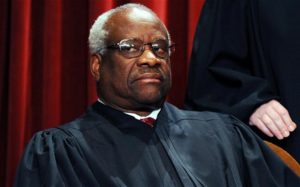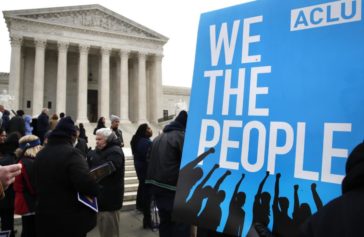In a decision suggesting there is hope for civil rights even in a hostile conservative judicial environment, the U.S. Supreme Court upheld Title VIII of the Civil Rights Act of 1968, also known as the Fair Housing Act.
With a 5-4 vote in Texas Department of Housing and Community Affairs v. Inclusive Communities Project, the nation’s high court preserved federal measures to protect against housing discrimination.
A civil rights law which receives far less attention than the Civil Rights Act of 1964 or the Voting Rights Act of 1965, the Fair Housing Act was a seminal piece of legislation that prohibited discrimination in the sale, renting or financing of housing on the basis of race, color, religion, sex or national origin.
In 1988, the Act was amended through the Fair Housing Amendments Act, which expanded coverage to prohibit discrimination based on disability or familial status, including pregnant women and the presence of a child under 18. In addition, the Act expanded U.S. Department of Justice jurisdiction to sue on behalf of victims in federal district courts, and established new enforcement mechanisms for the Department of Housing and Urban Development to bring actions before administrative law judges.
The case before the court involved the concept of disparate impact, which allows housing rights advocates and citizens to use the courts to challenge policies that disproportionately impact people of color, even where no overt racial motive can be proven. ICP, a Dallas-based nonprofit, learned that the TDHCA was allocating nearly all of its affordable housing tax credits in low income minority neighborhoods, and denying credits in more affluent white neighborhoods. ICP maintained this policy preserved racial segregation by blocking poor residents of color from moving to white residential areas.
For a court that has been hostile to civil rights—advocating for colorblind policies while gutting the Voting Rights Act and showing hostility to programs of inclusion and diversity in public universities—the ruling came as the Supreme Court upheld the Affordable Care Act, also known as Obamacare.
“Recognition of disparate impact liability under the FHA also plays a role in uncovering discriminatory intent: It permits plaintiffs to counteract unconscious prejudices and disguised animus that escape easy classification as disparate treatment,” wrote Justice Anthony Kennedy for the majority, joined by Justices Ruth Bader Ginsburg, Stephen Breyer, Sonia Sotomayor and Elena Kagan.

“Racial imbalances do not always disfavor minorities,” Thomas wrote, joining Justice Samuel Alito in his dissent. “[I]n our own country, for roughly a quarter-century now, over 70 percent of National Basketball Association players have been black. To presume that these and all other measurable disparities are products of racial discrimination is to ignore the complexities of human existence.”
Chief Justice John Roberts and Justice Antonin Scalia also dissented.
Evidence shows there is still a dire need for the protections afforded by the Fair Housing Act. For example, as was reported in The Atlantic, in 2013 the net worth of white households was 13 times greater than that of Black households, the largest gap since 1989. According to a report from the ACLU, by 2031, Black families will continue to feel the impact of the recession, leaving them $98,000 poorer than they would have been otherwise. Further, the ACLU says that before the 2008 economic crash, Black homeowners were unfairly targeted and preyed upon by banks, often redlined and denied services, and overcharged with higher-rate subprime mortgages.
Racism is not over, and it is unfortunate that discrimination in housing remains a fixture in American life. Although it is hopeful that a slim majority of the Supreme Court preserved this important law, it is equally disturbing, though not surprising, that the court’s African-American jurist sought to eliminate it.



